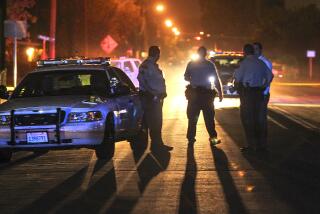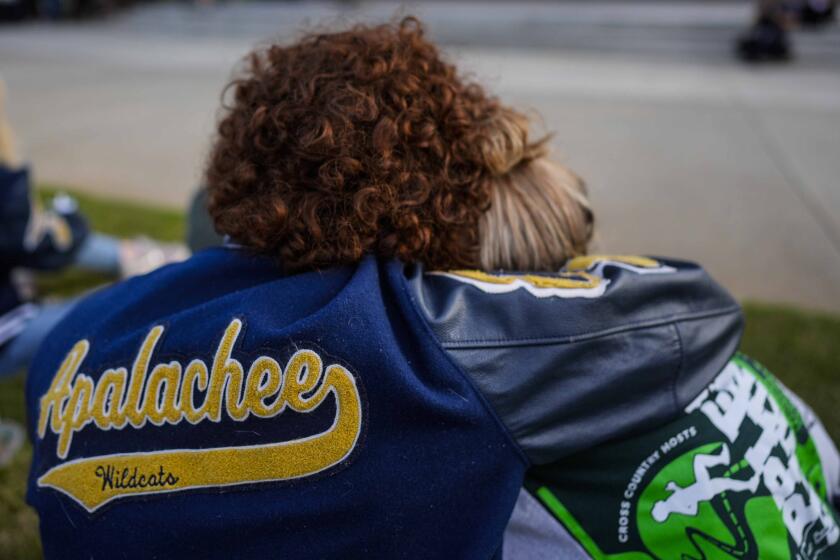Death on a Quiet Morning
In the business of news, death is no stranger.
We see it in hospital rooms and on street corners, on freeways and in the scattered wreckage of airliners.
We see it at war, in sports arenas and in the chambers of execution where legal judgments are finalized.
Death is newsprint to the journalist, an incident to be witnessed and reported, and then left behind in the files of our work.
I understand and accept that, the way a general accepts loss as a condition of war, taking an overview, trying not to look death directly in the eye.
But there are times when that’s not possible.
One of those times occurred last week on what they call the “service floor” of the coroner’s office.
I was walking among bodies in a room chilled to preserve them pending final disposition. They were stacked on individual tiers, each wrapped in clear plastic, packaged like commodities for shipment to some unknown place.
I stood in the middle of the room and looked around, and as I did, Scott Carrier, the department’s public information officer, said softly, “Guess who had the most toys?” His reference was to the bumper sticker that announces with limited perception, “He who dies with the most toys wins.” In death, he was saying, everyone is equal.
*
I was mentally categorizing the truth of the statement, wondering at the wealth and occupation of those tiered in eternal silence, when I saw the small body on a gurney near the door.
I had managed up until then to see but not absorb the melancholy nature of my surroundings, but a glimpse of the dead child imprinted itself on my brain. I’d guess his age at 7 or 8. He was wearing jeans and sneakers.
The coroner’s office processes about 20,000 bodies a year, approximately one-third of the people who die in L.A. County every 12 months.
The 20,000 include those who perish by homicide, suicide, accident or by means considered suspicious. Last year, 70 of the homicide victims were under the age of 9.
I wondered as we sat in Carrier’s office later in the morning if the small body I saw was one of them. I thought about asking but decided not to. To personalize what I had seen earlier under strictly clinical circumstances would have escalated a quick glimpse into an everlasting nightmare.
I was visiting Carrier to talk about the impact of his job on his life. He’s been with the coroner for 29 years, most of it as an investigator, and sees what he does as a public service, not as a keeper of the dead.
“We help families at their worst time,” he said. “It’s important to be caring and empathetic, but that can be a problem too. You can get too involved in a case, especially when the victim is a child. You keep thinking, what if it were my own?”
*
He sat behind a desk under whose glass surface were cartoons he had clipped from newspapers and magazines. Humor keeps stress at a distance. Carrier manages to be amiable under conditions that would unnerve a saint.
One way of keeping stress distant is to categorize. Death as a statistic is more tolerable than death as a close reality. Carrier relies on numbers to ease the strain of his job, but yields to humanity at unexpected moments.
As he enumerates the demise of children by homicide--70 last year, three the year before--he pauses, stares and asks, “Why is this happening? Mothers throwing their children from bridges and drowning them in rivers. Fathers killing their families. Why are we doing this to our kids?”
Figures become human, statistics cry out for explanation. Of the 2,000 homicides each year in L.A. County, 70% are from gunshot wounds.
Carrier offers the information as a fact; I accept it with frustration. What percentage of those people would be alive if campaigns to eliminate firearms were not thwarted by those to whom guns are scepters of power?
Would that little boy in blue jeans and sneakers still be running through our world, head thrown back, arms spread wide, electrifying the day with his vitality, filling our future with his dreams?
I spent a morning at the coroner’s office. I wanted to talk to Scott Carrier. I wanted to gather statistics. I also wanted, by contrast, to affirm life in a society that has grown too easy with death.
I missed on the last part, I know, because the image that remains is that quick glimpse of a little boy on a gurney. I keep seeing blue jeans and sneakers and hearing Scott Carrier ask, “What are we doing to our kids?”
Al Martinez can be reached online at al.martinez@latimes.com.
More to Read
Sign up for Essential California
The most important California stories and recommendations in your inbox every morning.
You may occasionally receive promotional content from the Los Angeles Times.










